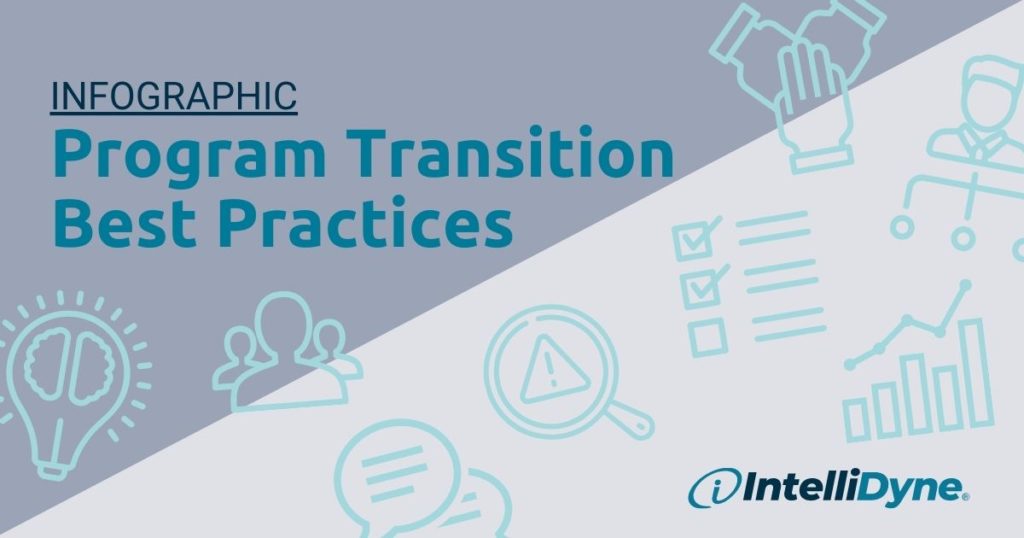Organizational change can be a challenge under the best of circumstances. Although many of the Best Practices below will continue throughout the lifecycle of a contract, setting a foundation of transparency, collaboration, and open communication from the start will ease the process of Program Transition for the customer and service provider.
- Developing a robust plan based on lessons learned and knowledge of the customer’s mission, environment, and concerns forms the foundation for a low-risk transition from one service provider to the next.
- Assigning a transition lead to create and manage the transition process creates direct lines of communication with the existing service provider, new service provider, and the customer without disruption to the workforce.
- Creating a transition team of experienced professionals to support the key leaders on the service delivery team ensures a smooth assumption of duties. Accountability is created by establishing communication between all stakeholders and providing assistance to individuals assuming new roles.
- Identifying risks during the initial transition conversations and developing avoidance or mitigation plans in partnership with the customer assures awareness by all stakeholders. Risks are closely monitored, and their status is reported during meetings with the customer.
- Gaining a clear understanding of the customer’s transition concerns, current environment, and desired changes at the beginning of the transition creates a map for success. Pairing key employees with current employees aids in the transfer of knowledge and provides cross-training. The incoming team will ramp up over the transition period.
- Staffing key positions early in the transition process provides the foundation to build a talented and well-qualified team. Top talent from the existing program can be easily integrated through collaboration with the customer, outgoing provider, and candidate. Innovation is created through the incorporation of employees with key historical knowledge, and incoming talent with fresh ideas.
- Identifying key metrics and performance parameters early in the transition provides a common goal and understanding of customers’ expectations. Reporting progress against these goals during daily and weekly meetings informs stakeholders of current status and provides early identification of problems. Transparency and frequent communication are key to solving problems before service degradation occurs.
- Developing a Communication Plan that establishes collaboration between the customers, incoming service provider, and outgoing service provider is crucial to any successful transition. The Communication Plan will be updated and maintained throughout the life of the program ensuring information is readily available.
Our latest infographic below highlights quick hits to successfully transition new programs and create positive organizational change.


